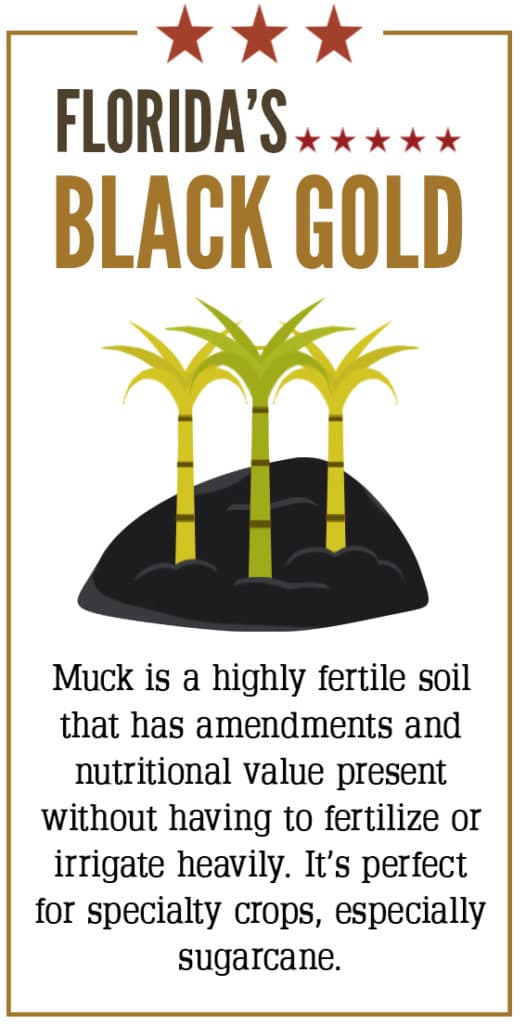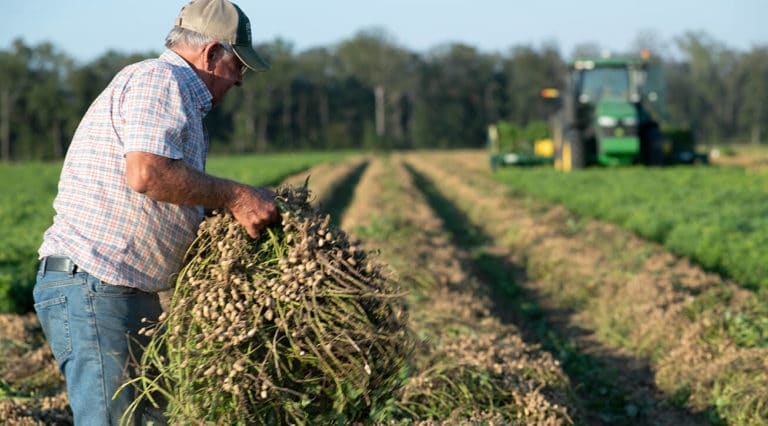Florida Sugarcane and Black Gold
Read about how important sugarcane is—and the muck it grows in—to Florida agriculture.
The state of Florida offers many different row crops, and sugarcane is a big one. Florida leads the U.S. in sugarcane production. While the tropical plant can be grown anywhere in The Sunshine State, the nutrient-rich muck fields of South Florida and Lake Okeechobee are the most desirable spots for growing the sun-loving cane. AgAmerica’s Regional Account Manager, Chuck Cruse, discusses this unique soil type, nicknamed “black gold,” and the steps farmers are taking to replicate it, below.
Florida Sugarcane Overview
Sugarcane is a tropical grass that is native to Asia. According to a UF/IFAS Overview, 75 percent of the tonnage produced in Florida comes from Palm Beach County, while the rest comes from Hendry, Glades, and Martin Counties.
Statistics compiled by the Florida Agricultural Statistics Service (FASS), show the extent of sugarcane’s production in Florida in 2015. Florida produced 54 percent of the U.S.’s sugarcane for production and seed, and it was worth $515 million. It accounted for 6.1 percent of Florida’s $6 billion agriculture industry.
Chuck Cruse on Sugarcane Muck: Florida’s Black Gold
Muck is a highly fertile soil that has amendments and nutritional value present without having to fertilize or irrigate heavily. The value of a parcel that contains muck soil fluctuates based on the depth of the muck, which can range from 12 inches to 30 feet deep in some areas. The deeper the muck, the more valuable the property is. However, there are only small areas of muck located in the state of Florida, the largest mass of it bedding in Palm Beach County around the bank of Lake Okeechobee.

“Muck is where sugarcane is primarily grown,” Cruse says, “because it takes a very minimal amount of work to grow it. You can get three to four cuttings off one planting of sugarcane, depending on the variety. When the farmer rotates the cane with sweet corn or other vegetables, it helps recycle those amendments back into the soil naturally. Once they’re done growing the cover crop, they’ll go in and till that crop, putting the nutrients and supplements back into the soil that’s then used to grow another crop of cane that will last another three to four years.”
Many farmers are finding innovative techniques to duplicate this scarce “black gold.” For instance, there are some sugarcane growers that are farming the cane on what is considered sand land. While the soil is entirely different than the muck, they’re bringing in mud and peat substitutes from the mills to replicate the nutrient-rich muck soil.
“These folks have the opportunity to bring some, what they call, ‘mill mud’ back to their properties to put the amendments back into the sand soil,” Cruse explains. “This gives them the properties and nutritional products that mimic the muck soil and grow better crops, even though they don’t have any depth of muck on the sand land. These farmers are putting anywhere from 12 to 24 inches of mill mud on top of the sand to help get the crop’s roots to be hardier, stronger, and to produce a better crop,” Cruse shares.
AgAmerica supports farmers in all ag sectors. We help the nation’s row crop farmers thrive and succeed with our custom loan packages featuring low interest rates, long amortizations, and an outstanding 10-year line of credit.






